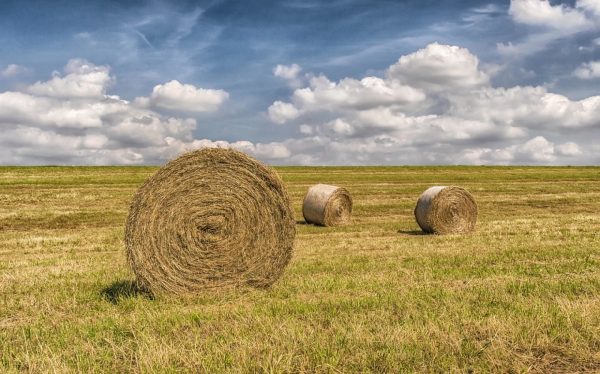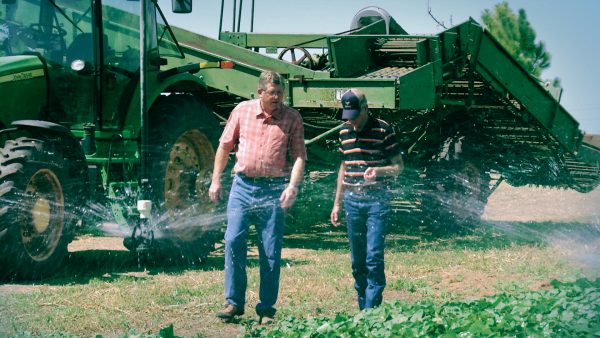Oklahoma farmers holding bag while waiting for tariff resolution
As the Trump administration rolls out federal aid for the agriculture industry caught in an escalating international trade war, Oklahoma farmers are waiting for a permanent solution to an uncertain future.
Tariffs like those from China, imposed in July 2018 on $50 billion worth of U.S. exports, are hitting several sectors of Oklahoma’s agricultural industry. Those tariffs are in retaliation to the Trump administration’s tariffs on billions worth of Chinese industrial goods this summer.
The escalating trade war could become costly to the state’s farmers. Oklahoma is not the hardest-hit state in this continuing trade war, but soybeans and pork, both among Oklahoma’s largest agricultural exports, are both subject to the 25 percent Chinese tariffs.
The Trump administration is offering financial and subsidy assistance to affected farmers through a $12 billion emergency aid package, available through applications. Payments worth $4.7 million for cotton, soybean, pork, wheat, dairy, sorghum and corn farmers opened for application in early September through the Market Facilitation Program.
While the payoffs are immediately helpful, they’re less than ideal for Oklahoma farmers in the long run, said soybean farmer Brent Rendel.
“It’s positive because obviously it’s better than to not get them at all, but the reality is, I don’t know of anybody who accepts that as worth going through the trade war at all,” Rendel said. “Everyone I’ve heard from says it’s too bad that we’re even having to do this… a better help would just be to get through the situation that we’re in and resolve it. I think everybody would rather not get the payment and resolve the trade issues in a more expeditious manner.”
Despite the growing importance and profitability of soybeans in Oklahoma over the past few years, Rendel said soybean farmers have already lost 10 to 15 percent of the market value of their crop over the past few months due to the Chinese trade war, which could mean some won’t break even this year. U.S. soybeans are generally used as feed for pigs in China, the world’s top 1 pork producer.
“I think everyone in the United States would tend to agree that the playing field between the United States and China has not been level, and that the advantage has gone to China,” Rendel said. “I don’t know what the correct method to get the playing field balanced is. This is one approach, and until we go through it, I don’t think we can say whether it’s the right or the wrong approach.”
Roy Lee Lindsey, executive director of the Oklahoma Pork Council, said while pork has been a growing export market that’s produced a significant amount of product this year, that product is selling at reduced prices, reducing the global competitiveness of U.S. pork producers. As of just over a month ago, the U.S. pork industry had seen a loss of $18 per head of hog since the beginning of the trade discussion, Lindsey said.
“We never anticipated that 2018 was going to be a great year in terms of profitability, but we did anticipate it would be profitable,” Lindsey said. “If we’re enduring $18 a head losses right now, there’s no way that the year turns out to be profitable. And so our producers are just kind of in hunker down mode: ‘How do we, how do we survive through this?’… ‘How do we navigate this bump in the road with these tariffs?’”
The government is now buying up U.S. pork to move the product off the market and into institutions like food banks “to help folks that are less fortunate,” a move Lindsey said is “good policy.” It’s a helpful move for now, Lindsey said, but not one that provides a long-term solution.
“While we appreciate that, what we need is a resolution to these trade disputes long term so that we have some long-term certainty,” Lindsey said. “Markets don’t like uncertainty. Producers don’t like uncertainty. We all want to know what the landscape looks like down the road — what’s the map look like out in the future?”
Jordan Shearer and other Oklahoma sorghum farmers have been feeling that uncertainty for most of 2018.
Shearer, who works with the Oklahoma Sorghum Commission, said in 2017, two-thirds of U.S.-grown sorghum was sold to China. Two common types of sorghum are forage sorghum, used for livestock grazing or hay, and grain sorghum, a widely-consumed cereal grain.
After a Chinese investigation into U.S. sorghum in early 2018, the Chinese government imposed a month-long 178.6 percent tariff on U.S sorghum. The USDA helped negotiate sorghum growers out of the steep tariff, but the industry is still facing the 25 percent tariff China imposed across many American exports in July.
The 2018 sorghum harvest is just beginning, so many farmers haven’t yet been able to apply for the administration’s subsidy program, Shearer said.
“We appreciate the FDA’s support in that, but still we’d much rather have the open market and not have these type of disaster programs,” Shearer said.
Some pressures on farmers will ease when the NAFTA agreement, which sets trade terms between the United States, Mexico and Canada, is secure, Lindsey said. The Trump administration announced a renegotiated NAFTA, now called the United States-Mexico-Canada Agreement, Sept. 30.
The U.S. will also have to seek out new trade partners or strengthen bonds with existing partners, Lindsey said.
For now, the ongoing trade disputes mean the next year’s worth of selling, planting and harvesting looks uncertain for farmers, Rendel said.
“Clearly if soybean prices continue to be depressed due to the trade negotiations and trade war, then that’s really got to come into play as far as what you’re going to do in 2019,” Rendel said. “If it looks like the trade situation is going to remain in flux and it’s not going to get resolved, then decisions will clearly be made that will favor other crops moreso.”
Shearer said sorghum is projected to yield a large crop this year, but prices are depressed and there’s “a lot of anxiety” about what the next year will look like, “especially if the trade situation continues to deteriorate.”
“We’ve got a lot of young growers that, people that have come back and to the farm in the last 10 years, they’ve gotten some high dollar land and equipment and have been struggling with low prices anyhow,” Shearer said. “This could really be the ruin of a whole, we could lose a whole generation of farmers. I mean, not saying that’s going to happen, but it could be. It’s in the cards.”
Gaylord News is a Washington reporting project of the Gaylord College of Journalism and Mass Communication at the University of Oklahoma.

is a print journalism senior and editor of the OU Daily, the University of Oklahoma's independent student publication. She reported in Washington, D.C., for Gaylord News in the fall 2018 semester.





